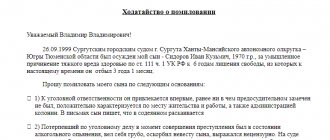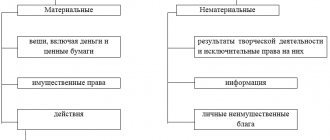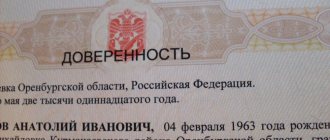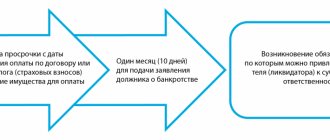Last updated March 2021
It's no secret that the number of crimes recorded by law enforcement every year remains appalling. However, among this entire mass there are several categories of criminal acts that pose a particular danger not only to the individual victim, but also to society as a whole. One of these rather significant categories is crimes committed out of hooligan motives. Such motives and motivations are often called unreasonable, meaningless and insignificant. This is precisely their danger.
Hooligan urges
One of the fundamental documents for understanding what hooligan motives are is Resolution No. 45 of the Plenum of the Armed Forces of the Russian Federation dated November 15, 2007.
We can talk about hooligan motives when a criminal acts without a clear reason, his actions indicate a desire to cross the boundaries of what is permitted, to show that he is superior society, neglects its foundations and rules of community life, with them he expresses denial, disrespect, non-acceptance of the norms and rules of behavior accepted in society.
For example , hooligan motives may be the desire to show one’s prowess, superiority over others, the ability to show cruelty, to mock someone, etc.
The Plenum Resolution indicates that crimes committed out of hooligan motives are deliberate illegal actions that encroach on a person himself or his property, committed without reason or using an insignificant reason.
Hooliganism
Responsibility for hooliganism is established by Article 213 of the Criminal Code. This is a crime committed with the only possible specific motive - hooliganism.
We should immediately separate two concepts - hooliganism, punishable under Art. 213 of the Criminal Code of the Russian Federation and what is commonly called such in everyday life.
It can be said that the word “hooliganism” used in everyday life can be revealed to some extent using the wording of the Criminal Code. In it, hooliganism is a gross violation of public order, expressing clear disrespect for society. However, criminal liability for it will only occur if there is an exhaustive list of conditions given in Part 1 of Art. 213, – if it is committed:
- using weapons or objects that were used as such;
- on any public transport (water, railway, air, etc.);
- based on hatred or enmity caused by the political, ideological, national, racial, religious views of the perpetrator or his extremely negative attitude towards any social group of people.
If these conditions are not met, criminal liability under Art. 213 is excluded.
The maximum possible punishment for such an act is up to 5 years of imprisonment for a composition not burdened with qualifying characteristics and up to 8 years for a qualified composition.
The courts are ordered to separate hooliganism from other crimes that may be committed for hooligan reasons. This separation occurs by carefully establishing:
- content and direction of intent;
- the purpose pursued by the perpetrator;
- circumstances of the commission of a criminal act.
What is hooliganism?
Today, hooliganism and crimes committed for hooligan reasons are two completely different concepts. Often such crimes are understood as those that are aimed at violating the safety of society. Such acts can create a real threat that could cost someone their life or a person could lose property. The difference between these two concepts is that some acts are committed on purpose and are a well-thought-out act, and sometimes everything happens due to negligence. As punishment for hooliganism, sanctions, fines, and imprisonment for a certain period of time may be applied to the object. As a rule, the following crimes are distinguished:
- Hooliganism, which is committed at the everyday level with the use of various objects.
- Extremist hooliganism, that is, the offense occurs against the background of hostility on religious, ideological or racial grounds.
- Mixed hooliganism is considered to be the most dangerous, since there is a serious motive for its implementation, and different types of weapons are used.
Whatever the reasons for committing hooliganism, the law provides for serious punishment. Even if the actions were committed by teenagers, they will have to answer for them according to the law.
Character traits
All crimes with hooligan motives, regardless of their internal content, have three characteristic features that, to one degree or another, can be identified in the following nuances:
- They are always sudden and occur quite quickly.
- The reason for the crime committed is either impossible to determine at all, or it is so small that it is simply not commensurate with the consequences that have occurred. That is why such criminals are often called inadequate people.
- The motivation for the actions of the guilty person is quite easy. He understands perfectly well that he is committing a socially dangerous act, even the consequences, but he cannot completely stop his feelings and use willpower to prevent it.
Types of crime
Crimes committed out of hooligan motives can be of the following types:
- In the first case, crimes can be presented in the form of an ordinary assault.
- In another case, this may already be a specific act that is aimed at something or someone.
In any case, hooliganism is most often carried out by persons who are drunk and at the same time trying to cause external destruction and damage. They may manifest themselves in violent actions towards other persons, but it should also be noted that this is not a mitigating circumstance.
Types of hooligan impulses
As was said, there are not so many types of such crimes, so it is worth paying attention to what hooligan motives can be considered in the Criminal Code:
- The most serious crime is murder due to hooligan motives.
- Causing serious harm to health.
- Causing moderate injuries.
- Intentional infliction of minor harm.
- Beating for hooligan reasons.
- Intentional destruction of property or causing damage.
- Intentional destruction of some important objects that support life.
- Cruel treatment of our smaller brothers.
- Hooliganism itself, for example, could be vandalism.
Hooligan motives and crimes involving harm to health with varying degrees of severity
Any personal injury will be dealt with separately. The legislation takes into account almost all the small details that may affect the mitigation or tightening of punishment. But in any case, the beating occurred, and it can be qualified as illegal actions committed out of hooligan motives. The main criterion for causing bodily harm, which will be considered in court, will naturally be the consequences of the beating. If the beating occurred for hooligan reasons, but the injured party received only minor injuries, then the punishment will not be so severe, in addition, the motives for such a crime will be carefully studied. Moderate damage can also be caused, but when the case is considered, in this category there is a chance to avoid punishment if both parties agree to the reconciliation that should occur between the perpetrator and the victim. If such a resolution of the problem does not occur, then the perpetrator may face criminal liability in the form of imprisonment. For what period will be decided by the court, which will carefully study all the motives for the crime. The most terrible crimes are those with hooligan motives that cause serious bodily harm to a person.
In this case, the Criminal Code provides for maximum sentences of imprisonment. More recently, in 2016, changes were made to the Criminal Code, so now beating of people who are part of the circle of relatives and friends is considered to be hooligan motives, for example, this could be all relatives, grandparents, grandchildren and children, as well as husband and wife. If such a violation is repeated, the person who commits hooliganism may be imprisoned for a certain period of time.
Hooligan motives are a mandatory sign for liability under the Criminal Code
The current criminal code includes a number of articles on criminal acts, for which liability must be committed out of hooligan motives.
That is, the legislator determined that the illegal actions described in these articles are so dangerous for society that the perpetrator bears criminal liability for them only when committed out of such motives. These norms are available in different chapters of the code and the objects of encroachment also differ.
Beatings
The first and one of the most controversial and controversial articles due to the impunity of domestic violence is Art. 116 “Beatings.” This article is included in the chapter of the Criminal Code, which combines acts harmful to life and health.
Previously, it punished the infliction of injuries that did not cause harm to the health of the victim, regardless of the motives for the act. Currently, responsibility for all such damage, without hooligan motives, comes to the perpetrator under the Code of Administrative Offenses (CAO) under Article 6.1.1.
For criminal liability to arise, it is necessary that the beatings were committed either from hooligan motives, or motivated by hatred or enmity on the basis of ideology, religion, political views and beliefs, etc.
The maximum penalty for this crime is 2 years in prison.
Crimes harmful to public safety
As many as 3 norms of this chapter of the Criminal Code provide for liability for the acts described in them that are committed out of hooligan motives:
- Part 1 and 2 art. 207 – knowingly false report about a terrorist act, about actions being prepared that create a threat of death, and the occurrence of other dangerous consequences for society (explosion, poisoning, flooding, arson, etc.). The most severe punishment for such hooligan actions is forced labor from 2 to 3 years under Part 1, and imprisonment from 3 to 5 years under Part 2, if the message concerned social infrastructure facilities (schools, gardens, parks, hospitals, etc. ) or caused damage in the amount of at least 1 million rubles.
- Art. 215.2 – rendering life support facilities unusable. Destruction, damage and other actions are punishable, the result of which will be the unsuitability for further operation of energy facilities, telecommunications, housing and communal services, and other life support facilities for the population, ensuring the production and transportation of water, gas, heat, electricity, etc. to consumers. The maximum penalty is deprivation freedom for a “simple” offense – up to 3 years, up to 7 years if these actions caused the death of a person (part 3 of the article). For criminal liability to arise under this article, the perpetrator must have either hooligan motives or a selfish motive.
- Part 3-5 art. 215.3 – rendering oil, petroleum product, and gas pipelines, associated objects, structures, communications, automation, and alarm systems unusable. There are two conditions for liability under this rule:
- disruption of their normal stable operation or the possibility of its occurrence;
- hooligan or selfish motives.
The maximum punishment under normal conditions under Part 3 is up to 5 years of isolation from society, if these hooligan actions resulted in the death of a person or other grave consequences - up to 8 years (Part 5 of the article).
Crimes from other chapters
The Criminal Code contains 2 more crimes, for which hooligan motives are a necessary condition for liability. They are located in different chapters, respectively, the object of encroachment is also different:
- – cruelty to animalsArt. 245. This act violates public morality. Hooligan motives here are one of the alternative conditions for liability. Other conditions - the purpose of the act is to cause pain and suffering to the animal, selfish motives or death, injury to the victim. The most severe punishment for qualifying criteria under Part 2 (sadistic methods, presence of a minor, public demonstration of torture, etc.) is from 3 to 5 years of complete isolation from society.
- Art. 267.1 of the Criminal Code of the Russian Federation - committing actions that pose a threat to the safe operation of transport. In relation to this article, they are understood as any actions that result in a threat to the safety of people, their property, transported goods or the transport itself (for example, some time ago, cases of blinding pilots with laser pointers became more frequent). This act was included in the Criminal Code relatively recently - in April 2021. Such an act can result in up to 2 years in prison for the perpetrator.
Cruelty to animals as a consequence of hooligan motives
Cruelty to animals is a crime. It can also be committed precisely from hooligan motives. Such hooligan motives will be regarded as opposition to morality and the public. It should be remembered that cruelty to animals is punishable under the Criminal Code. The court takes into account all the motives, as well as the consequences that resulted from such actions. For example, if an animal died or was injured as a result of illegal actions, and physical measures were applied to it, then such a violator will face severe punishment. Most likely, he will face imprisonment for several years. Cruelty can be considered not only by causing pain to an animal, but also by depriving it of food, as well as other methods of influence. Most often, hooligan impulses in this case are present as an opportunity to assert oneself and gain self-satisfaction. Such crimes are committed with a certain intent; there are no other reasons for committing them. Any person who commits illegal acts and is over sixteen years of age can be put on trial. If the crime was not committed alone, but by a whole group of people, then the punishment will be more severe.
To prevent crimes that are committed from hooligan motives, it is recommended to constantly carry out prevention in this direction. Social explanatory conversations should be held that can affect all areas of human activity. To do this, it is necessary to actively involve psychologists, teachers, social workers and specialists from other fields, such as narcologists and criminologists. It is necessary to actively develop a network of crisis centers and institutions where it is quite possible to receive psychological help. Particular attention should be paid to teenagers, who are always at risk and are most often such offenders. Special attention must be paid to disadvantaged families. Only in this way will it be possible to reduce the percentage of growth in crimes that are committed precisely because of hooligan motives. If you build a prevention system correctly, there will be much fewer such crimes, and this is very important for the state and its citizens. All citizens of the state are simply obliged to understand that they have equal rights, which means that no one has the right to commit such crimes. Consequently, such offenses will be prosecuted at the legislative level.
What role does the motive for the crime play?
Hooliganism and crimes committed with hooligan motives are carefully studied by specialists. Only after the corpus delicti have been analyzed will it be possible to draw certain conclusions. The fact is that all the crimes listed above are, first of all, an encroachment on various generic and specific objects. Very often the crime is related to causing harm to health or depriving an object of life; in another case, the crime may be committed with the aim of causing damage to property.
Concept
Crimes committed with hooligan motives are those that are initially committed on the basis of disrespect for society and the moral norms that are universally accepted in it. The person guilty of committing this act poses a challenge to society, wanting to oppose himself to the whole world, as well as demonstrate complete disrespect for the world around him. The motives for such crimes are almost impossible to understand, since they are often very deeply hidden in biological instincts, such as asserting one's identity or playing.
There are relatively few such crimes; in total, in the 2007 Plenum of the Supreme Court there are 9 types of them: from murder to hooliganism itself. They are considered grave precisely because the absence of a visible reason makes one think that death or harm to health was caused without any motive. However, if such cases are subsequently reviewed by experienced psychologists, they can often identify a rather complex and deep motive. It simultaneously includes the boundless egoism of the guilty person, his distorted concepts of his personality and its boundaries, the reigning cult of brute force among the people, and therefore the desire to test his own, as well as attacks of boundless, but short-term anger.
Hooligan motives are a qualifying feature
According to statistics, the most common crimes are those committed for hooligan reasons that encroach on the life and health of specific people. In the articles of the Criminal Code prohibiting such acts, hooligan motives are a noticeably aggravating factor for the perpetrator. These are the following intentional acts:
- Murder – clause “i” of Part 2 of Art. 105. Taking the life of another person for hooligan reasons is a particularly serious act, which is punished very severely. The maximum penalty for such an act is imprisonment from 8 to 20 years, or life.
- Infliction of grievous bodily harm – paragraph “e” of Part 2 of Art. 111. The maximum penalty is up to 10 years in prison.
- Causing moderate harm to health – clause “e” of Part 2 of Art. 112 of the Criminal Code of the Russian Federation. The most severe punishment is up to 5 years in prison.
- Causing minor harm to health – paragraph “a” of Part 2 of Art. 115. The maximum penalty is imprisonment for up to 2 years.
In each case of bodily injury to the victim, the degree of harm caused to health is examined by forensic experts as part of a forensic examination.
Law enforcers (preliminary investigation bodies and the court), in order to conclude the presence of hooligan motives when using violence during an quarrel, fight, conflict, are ordered to find out which of the participants was their initiator (criminal or victim), whether the conflict was a provocation with a specific purpose - for using it as a reason to commit a crime.
In situations where the conflict was caused by the victim, as well as when it was caused by the unlawful behavior of the victim, hooligan motives of the perpetrator in relation to such a victim are excluded.
Another crime for which hooligan motives are a qualifying feature is encroaching on the property of citizens.
This is the intentional destruction or damage of someone else's property, committed out of hooligan motives. They are being prosecuted under Part 2 of Art. 167 of the Criminal Code of the Russian Federation. The most severe punishment for such an act is imprisonment for up to 5 years.
Everything about criminal cases
Go to the list of all Plenums
Plenum of the Supreme Court of November 15, 2007 N 45
“On judicial practice in criminal cases of hooliganism and other crimes committed out of hooligan motives” (as amended on November 15, 2007)
TABLE OF CONTENTS
| HOLIGANITY (qualifying characteristics) — clause 1 Plenum No. 45 what is a gross violation of public order — — clause 12 Plenum No. 45 hooligan motives are committed without reason No hooliganism - — clause 13 Plenum No. 45 in relation to familiar persons, then this is not hooliganism ( WEAPON — clause 2 Plenum No. 45 what is meant by the use of weapons — clause 3 Plenum No. 45 what are objects used as weapons — clause 4 Plenum No. 45, even a toy can be a weapon GROUP OF PERSONS — clause 5 Plenum No. 45 group of persons - in case of hooliganism — clause 5 Plenum No. 45 excesses of the performer, a group of persons during hooliganism — clause 5 Plenum No. 45 there is no intent to use weapons and no motive of hostility ( — clause 6 Plenum No. 45 involvement of a minor in hooliganism ( — clause 7 Plenum No. 45 resisting the police during the commission ( RESISTANCE to government officials — clause 8 Plenum No. 45 what is meant by resistance — clause 9 Plenum No. 45 harm to the health of a government official — clause 10 Plenum No. 45 other persons protecting public order HARM TO HEALTH — clause 11 Plenum No. 45 if harm to health, then additionally an article against the person DAMAGE TO PROPERTY — — |
HOLIGANITY (qualifying characteristics)
1) In accordance with the law, only such gross violation of public order, expressing clear disrespect for society, which is committed:
- using weapons
or objects used as
weapons
,
- or based
political, ideological, racial, national or religious hatred or enmity, or based on hatred or enmity against any social group.
When deciding whether the defendant’s actions constituted a gross violation of public order, expressing clear disrespect for society, courts should take into account:
- way,
- time,
- the place where they took place,
- as well as their intensity,
- duration,
- and other circumstances.
Such actions can be committed both in relation to a specific person and in relation to an indefinite number of persons.
A person’s obvious disrespect for society is expressed in a deliberate violation of generally accepted norms and rules of behavior, dictated by the desire of the perpetrator to oppose himself to others, to demonstrate a disdainful attitude towards them.
The court must establish what specifically constituted a gross violation of public order, what circumstances indicated a clear disrespect for society by the perpetrator, and indicate them in the verdict.
WEAPON
2) Under the use of weapons
or objects used as
weapons
should be understood as
deliberate
actions aimed at a person using these objects for both physical and mental influence on the victim, as well as other actions indicating an intention to use violence through these weapons or objects used as weapons.
Items used as weapons
| - in order to recognize an object as such, an examination is not required. - the only sign of such an item: they can cause harm to health ( clause 3 Plenum No. 45) - that is, the properties of this item must be suitable for causing harm to health. It can be almost any item - that is, any thing that is potentially suitable for causing harm to health: a penknife (even with a 1 cm blade), a bottle. Doesn't matter where the item comes from : - he grabbed it from his pocket, or in the heat of a quarrel he grabbed a bottle from the table. Example: two hooligans attacked the victim. A) the first one hit with his fist: he was convicted under b) the second hit with a bottle, he was convicted under Items used as weapons also include : - a children's toy (similar to a pistol), a faulty weapon ( item 4 Plenum No. 45) - an animal, for example a large dog ( clause 3 Plenum No. 45). |
3) When qualifying a person’s actions under clause “a”, part 1 of 213 of the Criminal Code
courts should, if necessary, on the basis of an expert’s opinion, establish whether the object used in hooliganism is a weapon intended to kill a living or other target.
If there are grounds for this, the actions of the person who used a weapon during the commission of hooliganism must be additionally qualified under Article 222 of the Criminal Code
.
Note
| - what is considered a weapon: the definition of the term is contained in (P. Plenum No. 5). |
Objects used as weapons when committing hooliganism are understood as any material objects that, based on their properties, can cause harm to health
person.
In cases where, in the process of committing hooliganism, a person uses animals that pose a danger to human life or health, the act, taking into account the specific circumstances of the case, can be qualified under paragraph "a" part 1 of 213 of the Criminal Code
.
4) The use of unloaded, faulty, unusable weapons (for example, training weapons) or decorative, souvenir weapons, toy weapons, etc. during the commission of hooliganism. provides grounds for qualifying the offense under clause "a" part 1 213 of the Criminal Code
.
GROUP OF PERSONS
5) When qualifying the actions of the perpetrator as hooliganism committed by a group of persons by prior conspiracy, the courts must proceed from the requirements provided for in Part 2 35 of the Criminal Code
.
When deciding on the qualification of such actions under Part 2 213 of the Criminal Code
, courts should keep in mind that a preliminary agreement must be reached not only on the commission of joint hooligan actions, but also on the use of
weapons
or objects used
as
weapons, or on the commission of such actions
motivated
by political, ideological, racial, national or religious hatred or enmity, or motivated by hatred or enmity towards any social group by any of the
accomplices
. To qualify the crime, it does not matter whether all persons who agreed to commit such a crime used weapons or objects used as weapons.
If one person, in the course of committing joint illegal actions in the absence of a preliminary conspiracy with other participants in the crime, used weapons or objects used as weapons, or continued hooligan actions based on political, ideological, racial, national or religious hatred or enmity or hatred or enmity towards any social group, what he has done, if there are grounds for it, is subject to qualification under the relevant paragraph of Part 1 213 of the Criminal Code
(
36 CC
).
Actions of other participants who were not bound by a prior conspiracy and did not use weapons or objects used as weapons, and also did not commit criminal acts motivated by political, ideological, racial, national or religious hatred or enmity, or motivated by hatred or enmity in relation to any or social group, do not form part of the specified crime. If there are grounds for this, such actions may be qualified as petty hooliganism ( 20.1 Code of Administrative Offenses
).
6) If a person has involved a minor in committing a crime under Article 213 of the Criminal Code
, his actions are subject to qualification according to the totality of crimes provided for in the relevant part
213 of the Criminal Code
and
Part 4 of the 150 Criminal Code
(for involving a minor in a criminal group).
7) As hooliganism associated with resistance to a government official or other person performing duties to protect public order or suppress a violation of public order ( Part 2 213 of the Criminal Code
), the actions of the perpetrator should be qualified in the case where resistance was provided directly during
the
commission of criminal hooliganism.
In cases where resistance to a representative of the authorities is offered by a person after the cessation of hooligan actions, in particular in connection with subsequent arrest, his actions are subject to qualification under a set of crimes provided for in Part 1 213 of the Criminal Code
and the corresponding article of the Special Part of the Criminal Code, which provides for liability for the crime committed (for example, under
317 of the Criminal Code
or
318 of the Criminal Code
).
RESISTANCE to government officials
 Resistance to a government official or other person performing duties to protect public order should be understood as intentional
Resistance to a government official or other person performing duties to protect public order should be understood as intentional
actions of a person to overcome the legal actions of these persons, as well as the actions of other citizens, preventing a violation of public order, for example, when detaining a person committing hooliganism, disarming him, restraining him or otherwise preventing the continuation of hooliganism.
9) Hooligan actions associated with resistance to a representative of the authorities, during which violence was used, both non-dangerous and dangerous to life and health, should be classified as a set of crimes provided for in Part 2 213 of the Criminal Code
and the corresponding part
318 of the Criminal Code
.
If a person, while resisting a person performing duties to protect public order or suppressing a violation of public order, intentionally caused him serious or moderate harm to health or committed his murder, the act, if there are grounds for this, should be classified as a set of crimes provided for in Part 2 213 of the Criminal Code
and, accordingly,
clause “a” part 2 111
,
clause “b” part 2 112 of the Criminal Code
or
clause “b” part 2 105 of the Criminal Code
, as the commission of these crimes against a person in connection with the performance
of official
activities or performance
public
debt.
10) Persons performing duties for the protection of public order should include:
- military personnel,
— persons engaged in private detective and security activities involved in the protection of public safety and public order,
— officials of local government bodies who, under the special authority of the local government body, carry out functions to protect public order.
Other persons suppressing violations of public order are understood as persons who, although not vested with any powers, nevertheless participate in preventive actions on their own initiative.
HARM TO HEALTH
11) Bearing in mind that the corpus delicti provided for in Article 213 of the Criminal Code
, does not contain such a sign of the objective side of the crime as the use of violence (causing harm to human health of varying degrees of severity), and taking into account the fact that in hooliganism the intent is aimed at a gross violation of public order, in cases where, in the process of committing hooliganism, the victim, as well as a person performing the duties of protecting public order or suppressing hooligan acts is beaten or harmed to health of varying degrees of severity from hooligan motives, the act must be qualified according to the totality of crimes provided for in the relevant part
213
and part of the corresponding article
of the Special
Part of the Criminal Code, which provides for liability for crime against the person.
12) Courts should limit hooliganism, liability for which is provided for in Article 213 of the Criminal Code
, from other crimes, including those committed by a person out of hooligan motives, depending on the content and direction of his
intent
,
motive
,
purpose
and circumstances of the actions he committed.
Criminally punishable acts committed out of hooligan motives should be understood as intentional
actions directed against a person’s person or his property, which are committed without any reason or using an insignificant reason. At the same time, in order to correctly establish these motives in the event that the perpetrator commits violent acts during a quarrel or fight, the courts need to find out:
- who initiated them,
— whether the conflict was provoked to be used as a pretext for committing illegal actions.
Hooligan urges
| - hooligan motives: these are actions committed for no reason, without reason or for an insignificant reason (clause 12 Plenum No. 45). Example 1 : — You are standing in line at the box office in a cinema, and you see a person trying to buy a ticket without queuing. You, without explaining anything, strike - there are hooligan motives here. The court will consider that you hit, wanting to show your “coolness” to others, using the victim’s minor offense as a reason to demonstrate your strength. In such a situation, liability arises under a criminal article ( 116 of the Criminal Code ). Example 2 : - the same situation, but you do not hit immediately, but first make a claim, a verbal conflict begins, and in the heat of an argument you strike - there are no hooligan motives here, but there is hostility that suddenly arose during the quarrel. That is, there is no causelessness, there is no intent to commit hooliganism (and the longer the verbal quarrel lasts, the more difficult it is to accuse of hooligan motives). In such a situation, if there is no obvious disrespect for society, then liability will be administrative ( |
Url Additional information:
If the victim has no apparent wrongdoing
Two types
situations: when there is no
clause "z" part 1 of 61 of the Criminal Code
, but there is
part 2 of 61 of the Criminal Code
If the instigator of a quarrel or fight was the victim, as well as in the case when the reason for the conflict was his illegal behavior, the person is not liable for against such a victim of a crime for hooligan motives.
Causing harm to human health of varying degrees of severity or committing murder based on
political, ideological, racial, national or religious hatred or enmity or hatred or enmity towards any social group in the absence of other signs of a crime provided for in
213 Criminal Code
, should be qualified under the relevant articles, parts and paragraphs of the Criminal Code, providing for liability for crimes against individuals (for example, according to
clause "e" part 2 112 of the Criminal Code
).
13) Taking into account the fact that the subjective side of hooliganism is characterized by direct
intent, insults, beatings, causing harm to human health of varying degrees of severity, committed in the family, against relatives, acquaintances and caused by personal hostile relationships, incorrect actions of the victims, etc., in the absence of signs of a crime under
Part 1 213 of the Criminal Code
, must be qualified under the articles
of the Special
Part of the Criminal Code
,
which provide for liability for crimes against the person.
DAMAGE TO PROPERTY
14) Deliberate destruction or damage to someone else’s property, committed out of hooliganism
motives and causing
significant
damage should be qualified under
Part 2 167 of the Criminal Code
.
In cases where a person, in addition to the deliberate destruction or damage of property for hooligan reasons, commits other intentional actions that grossly violate public order, expressing clear disrespect for society (for example, using weapons
or objects used as
weapons
against an individual), what he has done must be qualified under
Part 2 167 of the Criminal Code
and the corresponding part
213 of the Criminal Code
.
When deciding whether the victim has suffered significant damage, the courts should proceed from the value of the destroyed property or the cost of restoring damaged property, the significance of this property for the victim, and his financial situation.
15) Vandalism committed based on
political, ideological, racial, national or religious hatred or enmity, or based on hatred or enmity against any social group, should be distinguished from hooliganism committed for the same reasons.
Vandalism not only violates public order, but also causes damage to property through desecration of buildings and other structures, damage to property in transport or other public places. In cases where, along with vandalism ( 214 Criminal Code
), a person commits hooliganism, liability for which is provided for in
213 Criminal Code
, the act should be qualified according to the totality of these articles of the Criminal Code.
16) Recommend that the courts, when establishing during the trial cases of hooliganism, as well as other crimes committed from hooligan motives, circumstances that contributed to the commission of crimes, and violations of the rights and freedoms of citizens, respond to these circumstances by issuing private rulings (decisions), addressing attention of relevant organizations and officials to the specified circumstances and facts of violation of the law, requiring the necessary measures to be taken ( Part 4 29 of the Code of Criminal Procedure
).
Go to the list of all Plenums
Request a consultation
Motive as a qualifying feature
In many crimes, hooligan motives are a separate qualifying feature. And if it is proven that the crime was committed precisely because of hooligan motives, then the punishment will be harsher. And this is understandable. The person simply went against the foundations of society, without having any grounds for this, and at the same time directed his actions against other people or their property.
Let's take several crimes for comparison. Each of them has a punishment in the form of imprisonment, and sometimes it is the only one, and there are no other alternatives. Let's compare how the term changes depending on the motives for committing criminal acts.
| Article of the Criminal Code of the Russian Federation | Term of imprisonment for actions without qualifying characteristics | Term of imprisonment for actions committed out of hooligan motives |
| Art. 105 Murder | from 6 to 15 years | from 8 to 20 years |
| Art. 111 Intentional infliction of grievous bodily harm | up to 8 years | up to 10 years |
| Art. 167 Deliberate destruction of property | up to 2 years | up to 5 years |
Criminal law
At the moment, hooligan motives in the Criminal Code of the Russian Federation most often act as just one of the qualifying criteria. They are aimed at toughening the punishment for the crime, because the attack occurs with a noticeably increased public danger.
However, it is at this stage that new difficulties arise. In practice, no explanation has been given of what exactly should be understood by deliberate hooligan motives. It is not even determined what motives can lead to the commission of such crimes. That is why criminologists have recently been trying to understand what exactly to perceive and what meaning to put into this term.
Hooligan motives and hooliganism - differences
A detailed explanation of what hooliganism and hooligan motives are is given in Resolution No. 45 of the Plenum of the Armed Forces of the Russian Federation. In paragraph 12 of this resolution, it is stated that courts and other professionals who are involved in law enforcement activities must distinguish between these two concepts. Here are the main factors that are necessarily present in hooligan motives:
- The presence of direct intent on the part of the offender;
- The purpose and direction of the action is against a person or against property;
- The offender’s motives are absent or insignificant;
- There are certain circumstances of the crime.
Hooligan impulses are not hooliganism
A more detailed explanation of both the crime of hooliganism and hooligan motives was given by the Plenum of the Armed Forces of the Russian Federation in its Resolution No. 45 dated November 15, 2007. In particular, according to paragraph 12 of this document, courts and other persons engaged in law enforcement activities should distinguish hooliganism from other criminal offenses acts, the qualifying feature of which is hooligan motives.
| Determining factors for distinguishing hooliganism from hooligan motives | Content of a crime committed out of hooligan motives |
| The content of the perpetrator's intent | Direct intent required |
| The direction of his actions, his ultimate goal | The criminal act is directed either against a person or against property |
| Motives of the criminal | The crime was committed without a reason or for a minor reason |
| Circumstances under which the act was committed | Other important circumstances |
The concept of incentives in the Criminal Code of the Russian Federation
When determining the elements of a crime, special attention is paid to the attitude of the offender to the crime. We are talking about the subjective side of the crime, which is a key factor in determining guilt and choosing a preventive measure.
The attacker's motives could be:
- Direct intent. In this case, the citizen is fully aware of his actions. He understands that he is breaking the law and can harm third parties or the state as a whole. However, this does not stop the criminal. On the contrary, he wants negative consequences to occur.
- Indirect intent. The citizen was involved in the crime; he was aware of the potential danger of his actions, but he was counting on a different outcome. Here it is possible both to commit actions that led to a crime, and to make no attempts to prevent the tragedy.
- Lack of intent. In this case, the crime occurs due to negligence. A qualifying feature in this case may be criminal negligence associated with the performance of official duties.
Hooligan motives are assessed within the subjective side of the crime. In this case, the behavior of the criminal is unreasonable and irrational. A hooligan is an ill-mannered person who disregards social principles and the rights of other people.
Punishment for a crime committed out of hooligan motives is determined according to the following criteria:
- form of guilt (negligence or intent);
- the motives of the criminal.
Depending on the circumstances, hooligan motives may be assessed as follows:
- As a sign of a crime, in the absence of which the attacker cannot be held accountable.
- In the form of a qualifying feature that allows you to toughen the punishment.
Acts with characteristic hooligan motives
In addition to the articles in which hooligan motives are either mandatory or an aggravating feature, which is directly stated in the articles themselves, the Criminal Code contains several rules on crimes for which such motives are most characteristic. These are, for example, the following criminal offenses:
- Vandalism (Article 214 of the Criminal Code of the Russian Federation) - desecration of buildings, structures, etc., damage to property in public places and on public transport. In the absence of qualifying signs, such actions are punishable by arrest for up to 3 months.
- Destruction or damage to objects of cultural heritage, etc. (Article 243 of the Criminal Code of the Russian Federation). The maximum penalty is up to 6 years in prison.
- Desecration of the bodies of the dead and their burial places (Article 244 of the Criminal Code of the Russian Federation) - damage, desecration of burial places of cemetery buildings for funeral or memorial rituals, grave structures, mockery, insulting mockery of dead bodies. In the absence of the qualifying criteria specified in Part 2 of the article, such actions may entail a penalty of arrest for up to 3 months.
Grounds for refusal to initiate a case
The criminal procedure law includes a comprehensive list of grounds under which a criminal case is not initiated, and if it has already been initiated, then it is subject to termination. When considering crimes whose qualifying feature is hooligan motives (including murder, beatings), it should be borne in mind that the suspect or accused will not be charged with this qualifying feature if during the preliminary investigation or later it turns out that:
1. The initiator of the quarrel was the victim.
2. The reason for the crime was the unlawful behavior of the victim.
3. There was an adversarial relationship between the offender and the victim.
In all of the listed cases, the culprit will not have these motives, that is, when he is brought to justice, this aggravating feature will not be part of the crime.
Legal assistance: why it is important
Independent defense from criminal prosecution in the absence of serious knowledge in the field of law is fraught with negative consequences. Taking this into account, in the event of criminal prosecution, you should take care of legal defense as soon as possible. This will allow:
- prevent illegal actions on the part of law enforcement officials and other persons during the investigation;
- objectively evaluate the evidence, including the witness base;
- call witnesses;
- challenge unlawful actions at the right time;
- require certain investigative actions to be taken;
- draw up the necessary social and psychological portrait of the suspect.
All of the above points will allow a competent lawyer to turn the case in favor of his client, prevent a biased court verdict, and reduce the possible punishment by reclassifying the crime.
For all questions related to both the considered and other crimes, you can always call 8 (495) 505-24-50. By scheduling a consultation with lawyer E.M. Murzakova, you can get clear and complete answers to any questions you may have, as well as enlist the support of an experienced specialist in criminal law.
Return to Criminal Cases section
A combination of hooliganism and hooligan motives
The above concepts are not mutually exclusive. The offender can be held accountable for hooliganism, that is, an act established by Art. 213 of the Criminal Code of the Russian Federation, and at the same time for a crime provided for by another norm and containing the sign “out of hooligan motives”.
A simple example of such a case is when the culprit causes significant damage to the property of the victim for hooligan reasons and at the same time commits other actions by which he violates public order and expresses clear disrespect for society. As the Supreme Court explained, when considering such cases, the qualification of criminal actions must be made as under Art. 213 of the Criminal Code of the Russian Federation, and under Part 2 of Art. 167 of the Criminal Code of the Russian Federation.
Arbitrage practice
There is a huge amount of judicial practice in cases with hooligan motives under Art. 213 of the Criminal Code of the Russian Federation as one of the signs. Moreover, it cannot be said that they were all correctly qualified. The lack of understanding by the investigator and the judges of the psychology of a person and an individual (namely the guilty person) leads to the fact that they simply cannot understand his motives, which seem completely natural to him.
Hooligan motives at their initial level are quite different from the standard ones. Even in crimes, they can often be simply ridiculous or absurd in nature, which gives reason to think that there is simply no motive. However, at a deep level it is always there - opposing oneself to society, drunken prowess, manifestation of brute force or cruelty, disregard for moral standards. All of these are the same viable motives that simply remain incomprehensible to many people. The need to prove yourself in some way, not even in the eyes of other people, but in your own. All this cannot be discounted under any circumstances.
Hooligan murder
If a person commits murder and hooligan motives are established, the punishment will be more severe. The reason is that he not only took someone’s life, but committed a crime against the background of hatred towards the whole world and towards the whole society.
Murder in this case is opposed to established law and morality. A person who is in such a state does not value human life, in principle. It is very easy to hurt him if, for example, he is intoxicated. He can commit murder with a simple nudge, remark or smirk. Everything that an ordinary person does not pay attention to can become a motive for murder for another.
It is for this reason that when investigating a murder, it is important to conduct as thorough an investigation as possible, taking into account many factors. It is important to understand how the criminal act was committed. For example, if during the investigation it becomes clear that the murdered person attacked first, it is impossible to convict the perpetrator based on hooligan motives.
Resolution of the plenum of the Armed Forces of the Russian Federation related to hooligan motives of various types
So that the law can correctly judge hooligan motives and the classification of crimes is assessed correctly, the plenum gave the following explanations:
- First of all, hooliganism can only be considered an action that completely does not correspond to generally accepted norms and is a clear disregard for society and others.
- When weapons are used during illegal actions. These can be different objects that will affect a person’s psyche or his physical condition.
- Only experts can find out how this or that object could affect the general condition of a person and whether it could even be aimed at hitting a target. For example, considering all hooligan motives, the plenum recognized not only objects as dangerous, but also dangerous animals that can be used to cause harm.
- Any weapon counts, even if it is a training weapon, but it can still cause injury.
- Hooligan acts can be committed not by one person, but by a whole group; such acts can be qualified as conspiracy.
- Hooliganism also includes opposition to authorities or their representatives who are on duty.
- All crimes directed against a person can be regarded as hooligan motives; the Criminal Code in this case provides for special punishment for each individual case. Any offensive phrases, harm to health and direct threat to personal life, crimes directed against relatives and family members are the consequences of such hooliganism, therefore liability is provided for this.
- Hooliganism is vandalism that is committed against the background of political or ideological hostility. When vandalism occurs, it not only disrupts public order, but also causes damage to other people's property. In this case, the violator may have to answer for a whole set of different articles.
Damage to property
Damage to property based on hooligan motives is considered a fairly common type of crime. In order for the offender to be convicted taking into account this factor, you will need to pay attention to the following points:
- The act resulted in severe damage or destruction of property;
- There are consequences for the wrongful act;
- There are motives that led to the offender destroying property.
It is in the presence of these factors that the difference between direct hooliganism and hooligan motives is most clearly manifested. For example, if property is completely destroyed and cannot be restored, the offender will be charged with hooliganism. If the property is subject to restoration, the crime will most likely be considered as committed against the backdrop of hooligan motives.
Such crimes can have a variety of consequences. And they must be taken into account in court:
- Causing harm to health;
- The victim has lost housing or lost funds;
- The organization or enterprise has ceased its activities;
- Buildings and, accordingly, people lost the opportunity to receive water, gas, heating and electricity.
Categories of criminals
There is a certain qualification of criminals who have committed crimes based on hooligan motives. As a rule, these are the following types and categories of persons:
- People with an unstable psyche with signs of violence and a complete lack of positivity. Usually they do not commit significant actions, but at the same time they are guilty of many minor offenses that can be classified as immoral.
- People who have many bad habits that they don’t even try to get rid of. The most common is alcoholism. This is what usually leads to the commission of a criminal violation.
- Violently recurrent type of people. These are persons who were previously convicted of crimes with hooligan motives and received appropriate punishments. They basically lead an antisocial lifestyle, which is simply necessary for their existence. They commit new crimes very easily and also bear the prescribed punishment without strain.
- Dangerous repeat offenders. These are people previously convicted of violent crimes. The personality of such people is usually very deformed; they have no moral culture and cannot exist in society.
Conviction of the perpetrators
Crimes with hooligan motivation are characterized by such immutable factors as insolence, rudeness and disregard for society!
All this manifests itself quite clearly and cannot but go unnoticed. It is for this reason that it is so important to normalize judicial practice and theory in this area. It is important to understand that conviction for these violations is not due when there is no clarity of motive, but when there are facts of gross violation of law and order.
Crimes associated with hooligan motives must necessarily involve violence. It is very closely related to hooliganism!
The judge must understand that if the motive is not clear, a crime still exists and should not be ignored.
Very often, to establish the exact guilt of the offender, they are sent for a psychiatric examination. A specialist can easily determine whether there is a hooligan motive in the criminal’s actions or whether he was driven by another motive.
If a hooligan motive is identified, completely different articles of the Criminal Code will be used to determine punishment. The reason is that in most cases they involve violence and are carried out on the basis of such motives as:
- Jealousy.
- Revenge.
- Necrophilia.
- Sadism.
An outsider or an illiterate person simply will not be able to recognize such signs. Even the criminal himself often does not see them. Nevertheless, they are always there, just hidden very deep inside.








